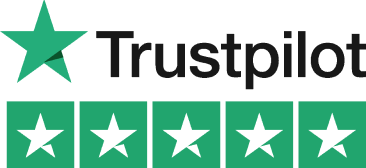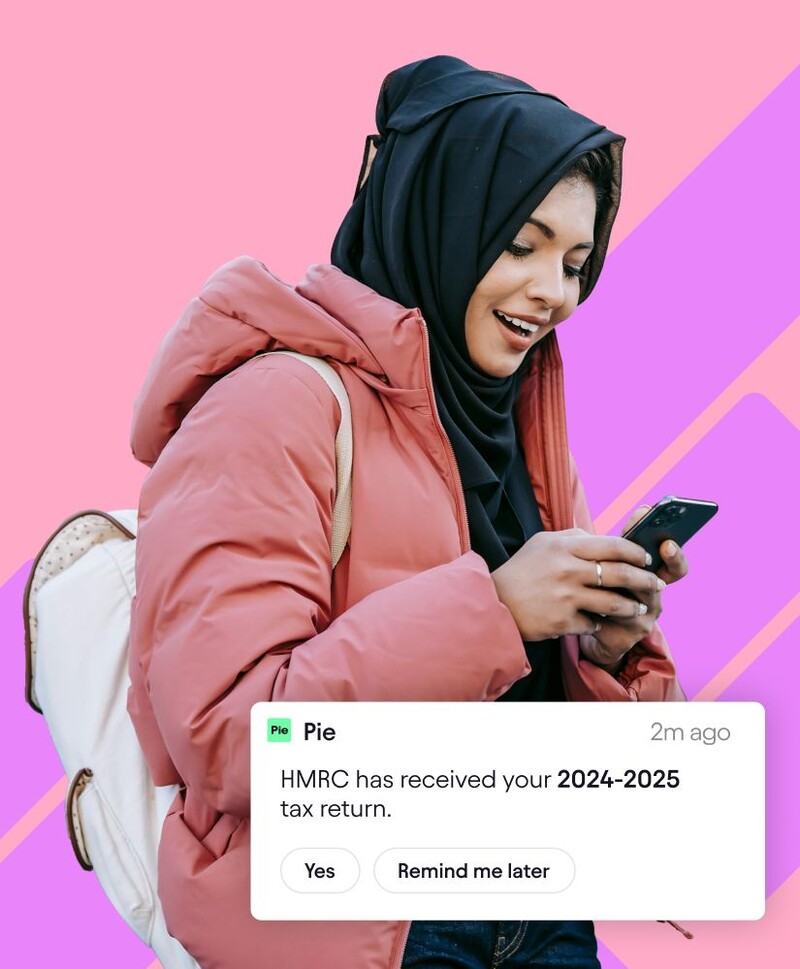Let's Dive in
Finding VAT on the confusing side?
Whether you’re sorting out your business finances, working for yourself, or just trying to figure out what’s added to your bill, the whole thing can seem more complicated than it needs to be.
But once you understand how Value Added Tax works, what the different rates mean, when you need to register, and how it affects what you pay or charge, it gets much easier to manage.
And if you’re looking for a simple way to handle it all, the Pie Tax app can help you stay on top of your VAT without the faff. It’s built to make things clear and hassle-free.
Just want to get your head around the basics first? Let’s walk through it together, one step at a time.
What Is Value Added Tax and Why Does It Matter?
VAT stands for Value Added Tax, and it’s a type of consumption tax that’s added to most goods and services in the UK. It’s an indirect tax, which means you don’t pay it straight to the government. Businesses collect it when you buy something, then send it on to HMRC.
You see VAT in action every day, even if you don’t notice it: on your takeaway, your broadband bill, your new shoes. And for the UK government, it’s a big deal. VAT raises billions in revenue every year to help fund things like the NHS, schools, and roads.
For VAT-registered businesses, there’s more to it. They charge VAT (called output tax), reclaim VAT on expenses (input tax), and file regular VAT returns. Get it wrong or miss a deadline, and you’re in HMRC’s bad books.
So even if VAT feels like it’s working in the background, it’s doing a lot, both for public services and for how businesses manage their money!

The Current VAT Rates in the UK (2025 Update)
Here’s a quick, no-fuss breakdown of the UK’s VAT rates for 2025:
20% Standard rate – This one’s on most things: clothes, electronics, services, and eating out.
5% Reduced rate – Applies to home energy, children’s car seats, and some energy-saving materials.
0% Zero rate – Covers essentials like most food, books, kids' clothes, and public transport.
A quick heads-up: zero-rated isn’t the same as VAT exempt. Zero-rated items still sit inside the VAT system (you can reclaim VAT on costs), but exempt items, like financial services and postage, don’t let you claim anything back.
Big change this year? From January 2025, private school fees are no longer VAT-exempt. They’re now subject to the full 20% rate. If that affects you, it's definitely worth budgeting for.
Knowing which rate applies makes a big difference, especially if you're running a business or just trying to figure out what you’re really paying!
Who Needs to Charge VAT?
If your business brings in more than £90,000 a year, you’ve hit the current VAT registration threshold, which means you’re legally required to register for VAT and start charging it on your sales. No choice in the matter!
But if you’re under that limit? You’ve got options. Plenty of freelancers, sole traders, and small businesses choose to register voluntarily so they can reclaim VAT on expenses like equipment, software, or travel. It can also make your business look a bit more established—especially if you’re working with other VAT-registered companies.
Why register early?
You can claim back VAT on things you buy for your business
It might help you look more professional
Why hold off?
You’ll need to file VAT returns and keep proper records
You’ll have to add VAT to your prices, which could put some customers off
It’s not always an easy decision, but knowing where you stand helps you make the right call!

VAT Schemes and Calculations (Quick Guide)
VAT can be a lot, but there are a couple of schemes that make life easier for businesses.
The Flat Rate Scheme means you pay a fixed percentage of your turnover as VAT, so no need to calculate VAT on every sale and purchase. It’s great for small businesses, but the rate depends on your industry, so check what applies to you.
The Annual Accounting Scheme lets you pay VAT in instalments throughout the year and only submit one return annually. It’s a good option if cash flow is a bit unpredictable.
The standard VAT rate is 20%, but some things get a 5% reduced rate (like energy-saving products and children’s car seats), and essentials like most food are zero-rated.
If you’re VAT-registered, you can also reclaim VAT on business purchases, which helps reduce your bill. And once your turnover hits £85,000, registration becomes mandatory!
VAT Payment and Refund
Most businesses pay VAT every quarter, unless they’re using the Annual Accounting Scheme, which spreads payments across the year. The easiest way? Online or direct debit: less stress, fewer missed deadlines.
If you're VAT-registered, you can reclaim VAT on business costs like software, tools, and travel, just file your VAT return with the right invoices and receipts. It could knock a nice chunk off your bill, or even land you a refund.
Refunds usually take a few weeks. You can track them online, or give HMRC a nudge if it’s taking a while. Some folks use refund companies, but always check they’re above board and HMRC-approved.
You can also claim refunds on things like exports or energy-saving products!Just make sure your paperwork’s solid.
Want help staying on top of all that? The Pie Tax app makes tracking VAT, filing returns, and keeping your records clean way easier. No jargon, no fuss.

VAT on Imports and Exports (The Basics)
If you're buying or selling across borders, VAT still applies, just in slightly different ways.
For imports, whether it’s from the EU or elsewhere, you’ll usually need to pay import VAT on the value of the goods. You can often reclaim it later, but make sure you’ve got the customs paperwork to prove it.
For exports outside the UK, most are zero-rated, so you don’t charge VAT, but you do need proper export documentation to back it up.
Using a customs agent or freight forwarder can take the pressure off, just make sure they’re HMRC-approved. And keep your invoices and declarations tidy. HMRC loves good records!
It sounds complex, but once you’ve got a process in place, it’s totally doable.
What Do the Rates Mean for Consumers?
For most of us, VAT is just part of the price: it’s already included in what you pay. So when you’re buying a coffee, booking a haircut, or picking up some new shoes, that 20% VAT is baked right into the total.
You’ll usually only see VAT listed separately on things like invoices or receipts from VAT-registered businesses. It’s more common when you’re buying services or making larger purchases, like furniture or event bookings.
Some items are taxed at reduced or zero rates. For example:
Home energy and children’s car seats are charged at the 5% reduced rate
Most food, books, and kids’ clothing are zero-rated, so no VAT added
And here’s where it can get confusing: zero-rated and VAT exempt aren’t the same. Zero-rated means there’s no VAT charged, but businesses can still reclaim VAT on related costs. VAT exempt (like insurance or some financial services) means no VAT is charged and nothing can be reclaimed!

What Do the Rates Mean for Businesses?
If you’re a VAT-registered business, the VAT rates shape how you price, spend, and report.
You’ll need to charge VAT on your sales, usually at 20%, unless what you sell qualifies for the 5% or 0% rate. That VAT gets added to your prices and sent to HMRC, so you're collecting it on their behalf.
You can also reclaim VAT on business expenses, like tools, subscriptions, or travel, as long as they’re used for taxable work and you’ve got the invoices to prove it.
Every quarter (or sometimes annually), you’ll submit a VAT return showing what you’ve charged (output VAT) and what you’ve paid (input VAT). HMRC expects you to keep records for at least 6 years, so staying organised really helps.
And to make things easier? You might benefit from schemes like the Flat Rate Scheme, which simplifies calculations, or Annual Accounting, which cuts down the paperwork.
Picking the right setup can make VAT feel a lot less stressful!
Common Mistakes Around VAT Rates
VAT’s full of easy-to-miss pitfalls! Here are a few to watch out for:
Zero-rated vs VAT exempt – Not the same! Zero-rated means 0% VAT but you can still reclaim. Exempt means no VAT charged and no reclaiming. Check out more info via the Gov website here.
Charging the wrong rate – It’s not all 20%. Some goods and services qualify for 5% or 0%, so check the latest rates. See VAT rates list here!
Messy records – You’ve got to keep invoices and receipts for 6 years. Poor records = HMRC headaches. Record-keeping guidance
Forgetting price updates after budget changes – Like private school fees in 2025, VAT rules can shift. Don’t forget to review your pricing.
Keep tabs on these and VAT becomes a lot easier to handle!
Final Thoughts
VAT might seem like a headache at first, but once you understand how it works, it gets much easier to manage.
Whether you're freelancing, running a business, or just keeping an eye on your finances, knowing the basics can save you time, money, and stress.
And if you'd rather not deal with all the fiddly bits, the Pie Tax app is here to make it simple. From tracking VAT to keeping your records in order, it does the hard work so you don’t have to.
Less faff, more focus. That’s how VAT should be!

Make VAT One Less Thing to Worry About
With the Pie Tax app, handling VAT doesn’t have to be a chore. From tracking expenses to filing returns, it gives you everything you need to stay in control, without the confusion or the cost.
You’ll also get smart prompts and helpful tools to keep you on track, so nothing gets missed.
Take control of your tax. Start using Pie Tax today.




